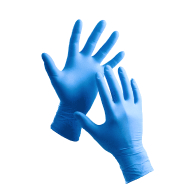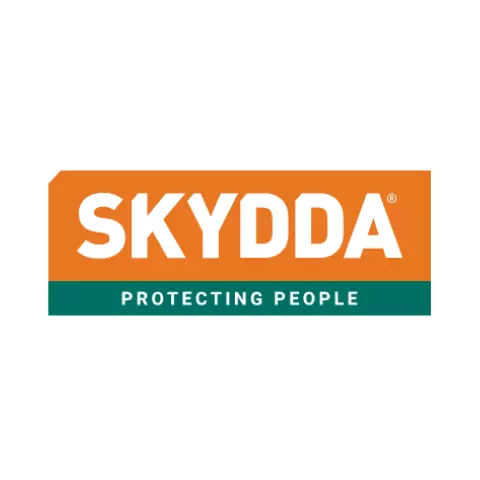Guide Cut Protection Glove
Product description
Waterproof winter glove with cut protection level C on the palm. Made of synthetic leather, flexible material on the back of the palm. Reinforced fingertips. Easy adjustment of the wristband with Velcro. Approvals: EN 388 3 X22 C, EN 407 X2 XXXX, EN 511 13 X
Identifies the material used on the dorsal side of the glove, affecting breathability, comfort, flexibility, and secondary protection properties during use.
Defines how the glove secures at the wrist, affecting comfort, debris protection, and ease of donning/removal. Options vary in security and coverage.
Suited for diverse tasks, offering reliable cut protection without sacrificing dexterity. Balances safety and flexibility for various applications.
Offers complete hand coverage, including full finger protection from cuts and abrasions. A versatile style suitable for various tasks and environments.
- Cut Resistant
- Heat & Flame Resistance
- Water Resistance
- Hand Protection
Request a free sample
Test first and buy later. Visit any product page to request your free sample.
Standards and labels
EN 511:2006 is a European standard that sets requirements for the protection against cold for gloves and mittens. It covers factors such as resistance to cold, water penetration and breathability. Testing must be done by a certified lab and must show that the product meets all requirements of the standard. Possible test results would include pass/fail for each requirement, as well as specific measurement data.
Test results
Cold Contact Level 1The standard EN 511:2006 specifies requirements for protective gloves that guard against cold environments. Cold contact performance Level 1 indicates a glove's level of protection against transmitted cold via physical contact with cold objects. For Level 1 specifically, the thermal resistance level must be above 0.025 but less than 0.050 m²°C/W. The test for this rating, known as the Contact Cold Test, involves placing the glove material on metal plates that have been pre-cooled to different specific temperatures. The temperature drop across the test sample is then measured to determine how effectively the glove insulates against cold. In practical terms, a glove achieving Level 1 in cold contact provides minimal thermal insulation, suitable for environments where exposure to slight cold is expected but not extreme cold conditions .
Water Tightness Level XThe standard EN 511:2006 defines the requirements for protective gloves against cold. The reference to a Water Tightness Level X in this standard typically indicates that the glove has not been tested for water tightness. Water tightness is assessed through a specific test method where the gloves are subjected to water exposure under controlled conditions to check for leakage. The gloves are filled with water and then inspected visually to determine the presence of any water leakage. The practical implications of a Level X result for water tightness suggest that the gloves are either not designed to be waterproof or they failed to meet the minimum criteria for being labeled as water-resistant under normal usage conditions. This information is important for procurement professionals focusing specifically on the need for water-resistant or waterproof protective gloves.
Convective Cold Level 3EN 511:2006 is a European standard that assesses the protective qualities of gloves against cold. The Convective Cold result Level 3 represents a performance level where gloves have a thermal resistance of 0.22 m²°C/W but less than 0.30 m²°C/W. This specification indicates that these gloves can effectively insulate against cold due to convective air movements at a significant level but not at the highest possible level. The test involves placing a heated hand form within the glove and monitoring the power required to maintain a constant temperature while the surrounding air temperature is progressively lowered. The thermal resistance (ITR) measured in these conditions reflects how well the glove can keep heat from being lost through convection, which is crucial for users in environments where exposure to cold air might otherwise decrease hand dexterity and comfort, affecting work performance and safety .
EN 388:2016 is a European standard for measuring the performance of protective gloves against mechanical risks (abrasion, cut, tear, and puncture). The standard includes test methods and performance requirements for gloves to be considered compliant. Test results are reported using a series of four numbers, each representing the performance level achieved in one of the tests.
Test results
Cut Resistance, ISO 13997 Level CThe EN 388:2016 standard comprehensively addresses the cut resistance of gloves, using the ISO 13997 test method, where achieving Level C indicates that the glove can withstand forces between 10 to 14 newtons during cutting. This level of cut resistance provides an intermediate level of protection against cuts, suitable for handling tasks where there is a significant risk of cuts from sharp objects but where the highest level of cut resistance isn't necessary. The ISO 13997 test itself is a more detailed and clear manner to assess material cut resistance under a straight-edge blade under varying load, unlike the Coup Test used previously, which could blunt the blade. Essentially, Level C gloves are designed for robust hand protection in environments where cut hazards are considerable but not at the most extreme end of the scale, making them suitable for industries like construction and manufacturing where sharp tools and materials are frequently handled.
Abrasion Resistance Level 3EN 388:2016 is a European standard that provides guidelines for assessing the protection levels of gloves against mechanical risks, such as abrasion, cuts, tears, and puncture. The Abrasion Resistance Level 3 indicates a higher level of protection, signifying that the gloves can resist more intensive wear from rough materials. According to the standard, the abrasion resistance test involves rubbing the glove material against sandpaper under a specified pressure until it is worn through. Level 3 abrasion resistance requires that the gloves withstand 2000 to 7999 cycles of abrasion. This enhanced level of durability is appropriate for tasks involving more frequent or more intense contact with abrasive surfaces, such as construction work, woodworking, and handling building materials. Gloves with Level 3 abrasion resistance offer a robust barrier against wear, extending glove life and providing increased protection for the wearer’s hands, thus reducing the risk of injuries in more demanding work environments.
Tear Resistance Level 2EN 388:2016 is a European standard that sets criteria for testing the mechanical risks for protective gloves, including abrasion, cut, tear, and puncture resistance. The Tear Resistance Level 2 designation indicates that the gloves have a moderate level of resistance to tearing. The test for tear resistance involves subjecting a sample of the glove material to a force until it tears, and the force required to initiate and propagate the tear is measured. Gloves that achieve Level 2 tear resistance can withstand between 25 to 50 Newtons of force. This level of tear resistance is suitable for tasks where gloves might face moderate stresses that could cause tearing, such as general handling and light industrial work where sharp or jagged materials are handled less frequently. These gloves provide reliable protection and durability in scenarios where some degree of mechanical risk is present but not excessively severe.
Puncture Resistance Level 2The standard EN 388:2016 includes an assessment of Puncture Resistance, where Level 2 signifies that the material has met specific criteria for resistance against puncture. The result of Level 2 in puncture resistance means that the protective glove or material can withstand a force of 60 to 100 newtons before being punctured. The test method used involves using a standardized steel puncture probe that is pushed against the material at a specified speed until it pierces through it. In essence, achieving a Level 2 puncture resistance under EN 388:2006 suggests that the protective equipment offers moderate protection against punctures, making it suitable for environments where there is a risk of encountering sharp objects such as needles, but are not excessively sharp or exert very high force.
EN 407:2020 is a European standard that specifies the safety requirements for protective gloves for thermal risks. It sets rules for the design, construction, and testing of gloves that protect users from heat and fire. Testing includes measurements of contact heat, convective heat, radiant heat, small splashes of molten metal, and flame resistance. The standard also includes requirements for labeling and instructions for use. This standard is an updated version of EN 407:2004, it includes new requirements, testing methods and performance levels to ensure that the gloves provide better protection against thermal risks such as heat, fire and molten metal splash.
Test results
Heat Contact Level 2The EN 407:2020 standard revolves around the specification for protective gloves against thermal risks, such as heat and flame. A entry marked as Heat Contact result Level 2 indicates gloves that provide moderate protection against contact with heat, capable of resisting a specific temperature of up to 250°C for a minimum exposure time determined by the Level 2 requirements. This protective level is tested primarily to ensure that users of these gloves can safely handle moderately hot surfaces without sustaining heat injuries. During the test for Heat Contact, a sample glove segment is exposed to a heat source at a specific temperature, and the time taken for the temperature inside the glove to increase by a set number of degrees (typically by 24°C) is measured. This result implies that these gloves offer sufficient protection for tasks involving significant but not extreme temperatures, making them suitable for various industrial, mechanical, and cooking operations where intermediate heat protection is necessary.
Heat Convection Level XIn the context of EU standard EN 407:2020, a test result signifying Heat Convection Level X indicates that the protective glove tested either did not meet the minimum requirements or was not tested under this criterion. It's vital to interpret such a label as the absence of certified protection against convection heat, which may involve exposure to energetically transferred heat via fluids or gases. The test method used to determine the Heat Convection Level involves measuring the time it takes for heat to transfer from a heated aluminum cylinder through the glove material to the inner surface where it might contact skin, as specified in the standard. The testing apparatus measures the rise in temperature inside the glove to assess its heat insulating properties. Practical implications of achieving 'Level X' in convection heat test suggest that the product is either unsuitable for environments where convection heat is a risk, or it necessitates further testing to ascertain its protective capabilities in specific conditions, crucial information for procurement decisions in safety-related industries.
Radiant Heat Level XEN 407:2020 is a European standard that sets the requirements for protective gloves to defend against various thermal hazards, including radiant heat. The designation Radiant Heat Level X indicates that the gloves have not been tested for this specific type of protection, or they did not meet the minimum criteria established by the standard for resisting radiant heat. This means that these gloves are not certified for protection against radiant heat, which involves the transmission of heat through infrared rays from a heat source without direct contact. The lack of a specific radiant heat protection level suggests that users should not rely on these gloves for tasks where significant exposure to radiant heat is expected. Instead, these gloves might be suitable for other types of thermal risks for which they are certified, ensuring users select the appropriate type of protective glove based on the specific hazards present in their working environment. This classification assists in preventing inappropriate glove use and enhancing worker safety by clearly indicating the limitations of the glove's protective capabilities.
Burning Behaviour Level XThe EN 407:2020 standard's specified test result Level X for Burning Behaviour indicates that either the test was not conducted or the sample was not applicable for testing under this specific parameter. Consequently, no performance level can be assigned according the criteria set in the standard. This finding is part of a broader testing protocol where Thermal Hazards Protection levels are determined for materials, especially used in gloves intended for heat handling. The test method evaluates the material’s ability to resist catching fire and its rate of burning. To assess burning behavior, the sample is exposed to a small flame, and observations are made on whether it ignites, how long it burns after the flame is removed, and how it extinguishes. Practical implications for products that receive a Level X for Burning Behaviour could include uncertainty in performance when faced with thermal hazards, thus impacting their suitability for jobs involving high temperatures or direct contact with flames.
Metal Splash Resistance Level XThe EN 407:2020 standard specifies different levels of protection for gloves against thermal risks, including metal splash resistance. A result marked as 'Level X' under this standard symbolizes that the glove material either did not meet the minimum requirements for testing or that no specific test was conducted for this hazard. The test for Metal Splash Resistance in EN 407:2004 involves exposing the glove material to molten metal splashes to determine how much molten metal is required to heat the glove material to a degree that it would cause risks to the wearer. The practical implication of a 'Level X' rating is that gloves marked as such should not be relied upon for protection against risks of molten metal splashes, making them unsuitable for use in environments where exposure to this hazard is likely.
Molten Metal Resistance Level XEN 407:2020 is a European standard that provides specifications for protective gloves to safeguard against thermal risks, including the exposure to molten metals. The designation Molten Metal Resistance Level X indicates that the gloves have not been tested for this specific risk, or they failed to meet the minimum requirements set out in the standard for protection against molten metal splashes. This means that the gloves are either unsuitable for use in environments where there is a risk of contact with molten metals, or additional testing is required to determine their suitability. Typically, such a classification implies that the gloves should not be used for handling molten metals and should only be considered for other types of thermal risks specified in the standard, where molten metal exposure is not a concern. This classification helps in ensuring that users select the right type of glove based on the specific hazards present in their working environment, thereby preventing inappropriate use and enhancing safety.
PPE stands for "personal protective equipment." PPE Category 2 refers to equipment that is more complex, and has a higher level of risk. Examples of PPE Category 2 include safety helmets, ear protection, and fall arrest equipment. In Europe, PPE Category 2 must meet certain safety standards set by the European Union, which means that it must be designed and manufactured to protect the user without causing harm. Companies that make or sell PPE must prove that it meets these standards. They also must have a quality management system in place and have to be audited regularly by a notified body.
CE Marking is a label that shows a product meets certain safety and environmental standards set by the European Union. To get the CE Marking, a company must test and certify their product meets these standards. CE Marking is required for many products sold in the EU, including electronics, machinery, toys and medical devices. It helps ensure that products are safe for consumers and the environment, and allows for easy trade within the EU.
Skydda delivery terms
Free delivery for all Skydda products
168,67 €
Price per 6 pairs
28,11 € / pair
Shipping fee is 6,33 € for orders under 150,00 €
A package contains 6 pairs
Need larger quantities?
Other products you may like
Recently viewed
Need help?
Get help from our experts
Other products you may like
Similar products you may like
Recommended for you
Skydda
Delivery time: 3 business days
Supplier shipping fee 6,33 €
Free shipping on orders over 150,00 €



Find +150,000 products from hundreds of brands
Autonomous sourcing platform
The most efficient way to source and order supplies for your operations
Sourcing
Ordering
List products you’re looking for and we’ll find the best products and prices for you – all for free.
Need help?
Get help from our experts
